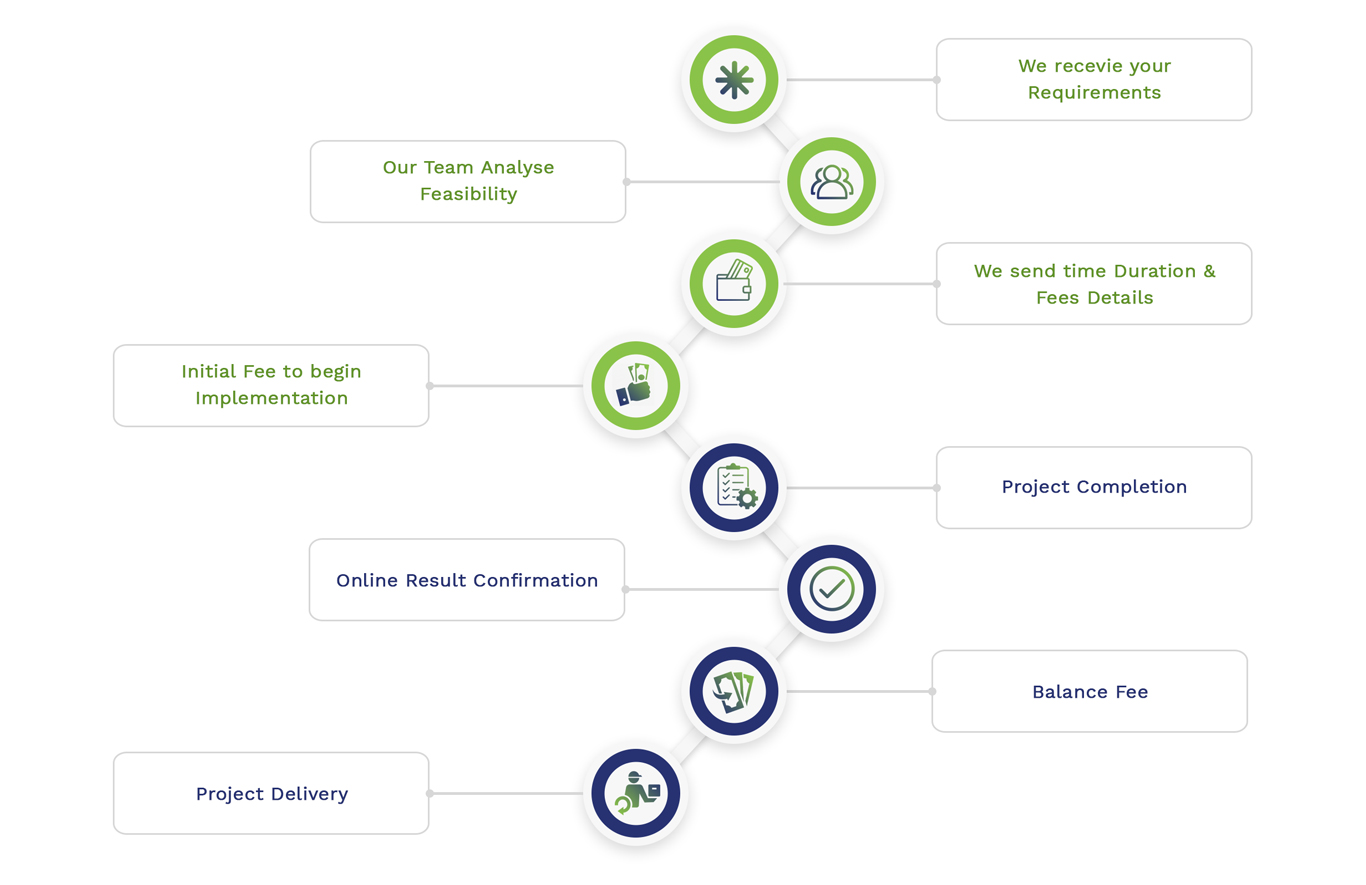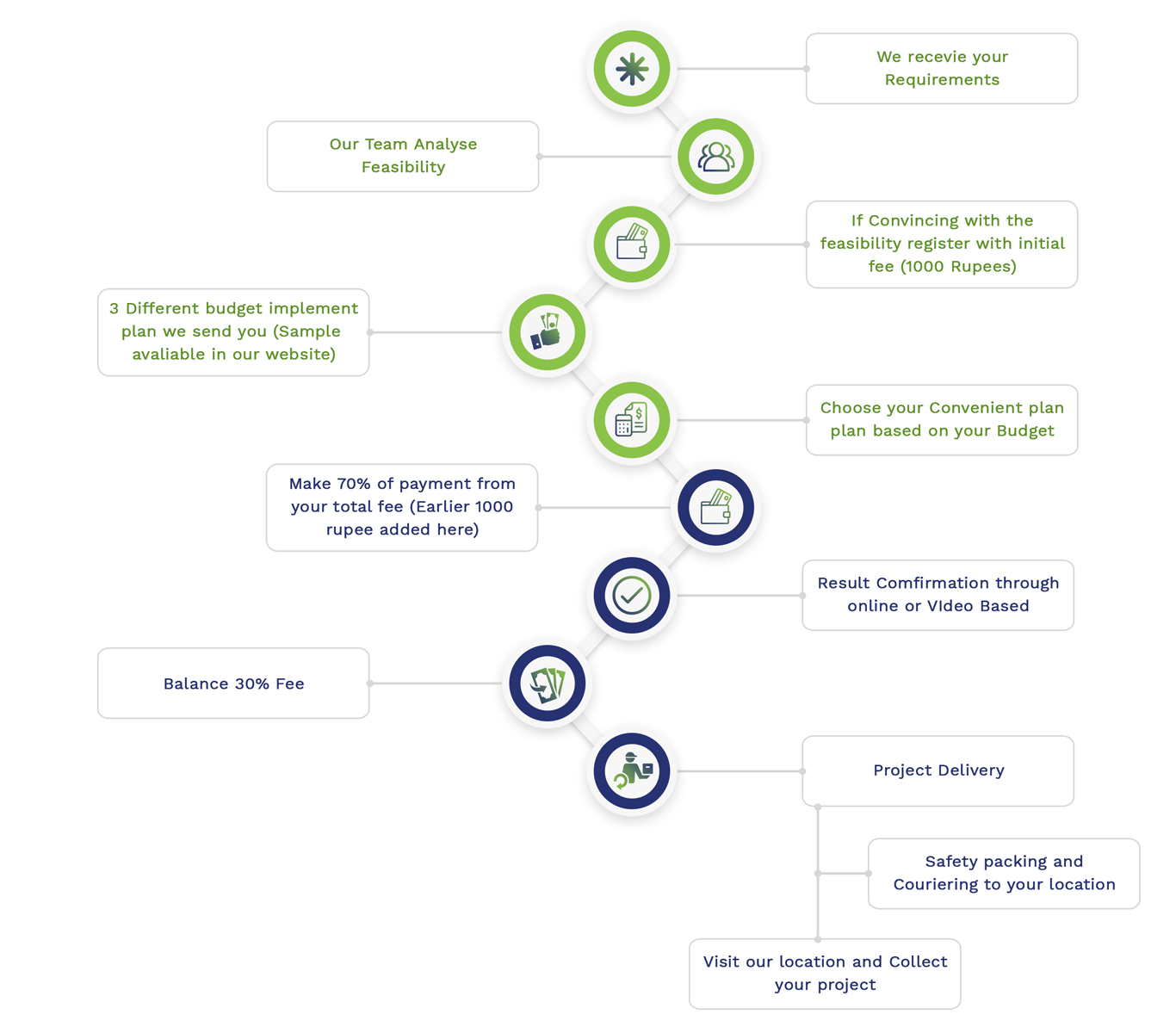DVR MATLAB Simulation are worked by us here we work on by carrying and developing a system based on diverse voltage and frequency configurations or designing the features of power and performance are often involved in simulating the DVFS in MATLAB. If you are seeking for details or guidance in this process, this article guides you throughout the process. We possess all the leading tools and technical expert team ot provide you with good simulation results.
To develop a basic DVFS simulation in MATLAB, detailed instructions are provided here:
Step-by-Step Procedure
- Specify the System Framework
Encompassing the probable voltage and frequency levels, the parameters for our system or processors ought to be specified. Among frequency, voltage and power, we have to define the correlations.
- Develop Voltage and Frequency Levels
For carrying out the process of system, we need to develop arrays for appropriate voltage and frequency levels,
voltage_levels = [0.8, 1.0, 1.2]; % Sample voltage levels in volts
Frequency levels = [1.0, 1.5, 2.0]; % Sample frequency levels in GHz
- Determine Power Consumption Model
To connect power usage with voltage and frequency, a model should be specified effectively. P=C⋅V2⋅fP = C \cdot V^2 \cdot fP=C⋅V2⋅f is a general framework of power consumption, in which fff indicates its frequency, CCC is the capacitance (a constant), VVV is voltage and PPP is power.
C = 1e-9; % Capacitance in farads
power_consumption = @ (V, f) C.* V. ^2.* f;
- Simulate DVFS
At various voltage and frequency levels, simulate the power usage by developing a loop.
results = zeros(length(voltage_levels), length(frequency_levels));
for i = 1:length(voltage_levels)
for j = 1:length(frequency_levels)
V = voltage_levels(i);
f = frequency_levels(j);
P = power_consumption(V, f);
results(i, j) = P;
end
end
- Visualize Findings
In order to exhibit the power usage at various voltage and frequency levels, we need to design the findings.
[X, Y] = meshgrid(voltage_levels, frequency_levels);
figure;
surf(X, Y, results’);
xlabel(‘Voltage (V)’);
ylabel(‘Frequency (GHz)’);
zlabel(‘Power Consumption (W)’);
title(‘Power Consumption vs. Voltage and Frequency’);
Sample Code
On the basis of above mentioned measures, we provide an entire MATLAB program below:
% Define voltage and frequency levels
voltage_levels = [0.8, 1.0, 1.2]; % Volts
frequency_levels = [1.0, 1.5, 2.0]; % GHz
% Define power consumption model parameters
C = 1e-9; % Capacitance in farads
% Power consumption model
power_consumption = @(V, f) C .* V.^2 .* f;
% Initialize results matrix
results = zeros(length(voltage_levels), length(frequency_levels));
% Simulate DVFS
for i = 1:length(voltage_levels)
for j = 1:length(frequency_levels)
V = voltage_levels(i);
f = frequency_levels(j);
P = power_consumption(V, f);
results(i, j) = P;
end
end
% Visualize results
[X, Y] = meshgrid(voltage_levels, frequency_levels);
figure;
surf(X, Y, results’);
xlabel(‘Voltage (V)’);
ylabel(‘Frequency (GHz)’);
zlabel(‘Power Consumption (W)’);
title(‘Power Consumption vs. Voltage and Frequency’);
Further Considerations
- Processor Performance Model: By including a framework for processor performance, we can improve the simulation. It could involve instructions per second and in what way it changes with frequency.
- Thermal Constraints: To assure the thermal restrictions, if it is not breached, we have to incorporate thermal modeling.
- Energy Efficiency: At various DVFS platforms, the energy effectiveness (performance per watt) needs to be assessed.
- Workload Characteristics: As a means to observe, in what way the workloads carried out in accordance with various DVFS platforms, simulate the diverse kinds of these load densities.
- Real-world Data: For more authentic simulations, make use of power measurements and utilize real-world data for frequency, capacitance and voltage, if it is feasible.
Significant dynamic voltage and frequency methods & algorithms list
As reflecting on modern processors and systems, we provide a detailed list of highly considerable DVFS (Dynamic Voltage and Frequency Scaling) methods and techniques that can be beneficial for power management:
- Basic DVFS: Depending on P-states (predefined performance states), it conducts basic evaluation of voltage and frequency.
- Adaptive Voltage Scaling (AVS): On the basis of performance demands and workload requirements, this algorithm modifies the voltage efficiently.
- Dynamic Voltage Scaling (DVS): To store power, it does not modify the frequency and only the voltage can be changed.
- Discrete DVFS: The small number of predefined voltage-frequency pairs is effectively adopted by these algorithms.
- Continuous DVFS: It offers detailed control and facilitates users for a consistent amount of voltage and frequency applications.
- Feedback-Controlled DVFS: In order to modify voltage and frequency in a dynamic approach, it utilizes reviews from sensors such as thermal sensors.
- Workload-Aware DVFS: According to the types and capability of the workload, this method modifies voltage and frequency.
- Thermal-Aware DVFS: To handle and manage the temperature of the processor, it efficiently modifies the frequency and voltage.
- Energy-Aware DVFS: At the time of preserving the approvable performance levels, this method highly concentrates on reduction of energy usage.
- Deadline-Aware DVFS: For the purpose of addressing the timebound of real-time tasks, this algorithm productively modifies the voltage and frequency.
- Machine Learning-Based DVFS: In accordance with data of past records, it anticipates the best voltage and frequency applications by using machine learning techniques.
- Heuristic-Based DVFS: To modify the applications of voltage and frequency, this method deploys heuristic standards.
- Stochastic DVFS: Specifically for defining voltage and frequency arrangements, it effectively employs probabilistic techniques.
- Probabilistic DVFS: It handles voltage and frequency modifications by using probability distributions.
- Predictive DVFS: This technique highly implements predictive techniques, which assist in predicting the modification of load densities and consequently, it alters the configuration.
- Performance-Per-Watt Optimization: As per watt metric, voltage and frequency are modified by these techniques for enhancing the performance.
- Profile-Based DVFS: To alter frequency and voltage, the pre-defined models are extensively employed here on the basis of common usage conditions.
- Cache-Aware DVFS: While modifying frequency and voltage, the condition of cache like (e.g., cache misses) is efficiently examined.
- Cluster-Level DVFS: At the cluster phase in which the diverse processors or cores can be modified in a concurrent manner; DVFS is handled productively by implementing this method.
- Task-Level DVFS: According to each mission, it adapts frequency and voltage.
- Multi-Core DVFS: In a processor, this technique handles voltage and frequency across diverse cores.
- Fine-Grained DVFS: Mostly at a range of personal functional units among a processor, it offers fine granularity in frequency and voltage adaptations.
- Voltage Island-Based DVFS: Each with its self-reliant DVFS control, this algorithm classifies the chip into voltage islands.
- Battery-Aware DVFS: Generally in mobile devices, it adapts frequency and voltage as regards with persisting battery durability.
- Quality of Service (QoS) Aware DVFS: This technique preserves a demanded level of QoS through adapting the configurations.
- Leakage-Aware DVFS: When adapting voltage and frequency, it examines leakage power along with dynamic power.
- Critical Path Monitoring DVFS: Specifically for assuring timing limitations, whether they are addressed, this algorithm modifies the frequency and voltage by tracking the crucial path of the processor.
- Utility-Based DVFS: To stabilize power usage and functionality, it deploys utility operations.
- Hierarchical DVFS: As reflecting on diverse levels of system hierarchy like system, processor and core, this technique executes the DVFS method.
- Adaptive Body Biasing (ABB) with DVFS: For advanced power capacity, the body biasing method is integrated with DVFS.
- Interference-Aware DVFS: Regarding the disruption among tasks, DVFS is perfectly handled by this technique in multi-process or multi-threaded platforms.
- Deadline-Miss Rate Based DVFS: In real-time applications, the rate of past time bounds is reduced through adapting its configurations.
- Thermal Gradient Based DVFS: Beyond the chip, we handle heat emission in an effective approach by examining the thermal gradients.
- Power Gating with DVFS: Especially for optimal power storage, power gating method is synthesized with
- Application-Specific DVFS: Considering the particular applications such as multimedia or gaming, DVFS methods are designed accordingly.
- Phase-Locked Loop (PLL) Controlled DVFS: For handling the frequency modifications in an accurate manner, this method deploys PLLs.
- Voltage-Frequency Island (VFI) Based DVFS: Across voltage as well as frequency, it has precise management and is relevant to voltage island-based.
- Temperature Inversion Aware DVFS: While modifying the arrangements, it effectively examines the implications of temperature inversion on transistor performance.
- Energy Harvesting Aware DVFS: As regards accessible energy from harvesting sources like solar, it adapts configurations.
- Supply Voltage Droop Mitigation DVFS: For the purpose of assuring authentic operation, problems of dropout voltage are managed through this technique.
- Dynamic Reliability Management (DRM) with DVFS: It stabilizes integrity, functionality and capability by modifying the arrangements.
- Neural Network-Based DVFS: To forecast best arrangements of DVFS, neural networks are extensively used by this method.
- Bayesian Optimization-Based DVFS: Particularly for effective DVFS management, this algorithm employs methods of Bayesian optimization.
- Proactive DVFS: As regards the prediction of adjustments in upcoming load densities, it modifies the existing arrangements.
- Adaptive Filter-Based DVFS: In order to make the DVFS modifications in an effortless manner, it mainly uses adaptive filtering methods.
- Dynamic Thermal Management (DTM) with DVFS: Considering extensive thermal management, these techniques synthesize DTM methods with DVFS.
- Frequency Scaling with Error Detection and Correction: For accessing more intensive frequency evaluation, it employs error identification and rectification mechanisms.
- Heterogeneous Multi-Core DVFS: Among various multi-core processors with diverse crucial models, DVFS is effectively handled by this algorithm.
- Context-Aware DVFS: Depending on the usage context like application condition and user behaviors, it modifies the arrangements.
- Statistical Learning-Based DVFS: We enhance DVFS arrangements, this method efficiently deploys statistical learning techniques.
For guiding you in interpreting and simulating DVFS in MATLAB, we offer simple steps and also popular, effective techniques which are included in DVFS with brief explanations are exhibited above. If you are keenly looking for proposal ideas with algorithm support share with us all your reasech data and ideas we give you best guidance.
Subscribe Our Youtube Channel
You can Watch all Subjects Matlab & Simulink latest Innovative Project Results
Our services
We want to support Uncompromise Matlab service for all your Requirements Our Reseachers and Technical team keep update the technology for all subjects ,We assure We Meet out Your Needs.
Our Services
- Matlab Research Paper Help
- Matlab assignment help
- Matlab Project Help
- Matlab Homework Help
- Simulink assignment help
- Simulink Project Help
- Simulink Homework Help
- Matlab Research Paper Help
- NS3 Research Paper Help
- Omnet++ Research Paper Help
Our Benefits
- Customised Matlab Assignments
- Global Assignment Knowledge
- Best Assignment Writers
- Certified Matlab Trainers
- Experienced Matlab Developers
- Over 400k+ Satisfied Students
- Ontime support
- Best Price Guarantee
- Plagiarism Free Work
- Correct Citations
Expert Matlab services just 1-click

Delivery Materials
Unlimited support we offer you
For better understanding purpose we provide following Materials for all Kind of Research & Assignment & Homework service.
 Programs
Programs Designs
Designs Simulations
Simulations Results
Results Graphs
Graphs Result snapshot
Result snapshot Video Tutorial
Video Tutorial Instructions Profile
Instructions Profile  Sofware Install Guide
Sofware Install Guide Execution Guidance
Execution Guidance  Explanations
Explanations Implement Plan
Implement Plan
Matlab Projects
Matlab projects innovators has laid our steps in all dimension related to math works.Our concern support matlab projects for more than 10 years.Many Research scholars are benefited by our matlab projects service.We are trusted institution who supplies matlab projects for many universities and colleges.
Reasons to choose Matlab Projects .org???
Our Service are widely utilized by Research centers.More than 5000+ Projects & Thesis has been provided by us to Students & Research Scholars. All current mathworks software versions are being updated by us.
Our concern has provided the required solution for all the above mention technical problems required by clients with best Customer Support.
- Novel Idea
- Ontime Delivery
- Best Prices
- Unique Work
Simulation Projects Workflow

Embedded Projects Workflow



 Matlab
Matlab Simulink
Simulink NS3
NS3 OMNET++
OMNET++ COOJA
COOJA CONTIKI OS
CONTIKI OS NS2
NS2






